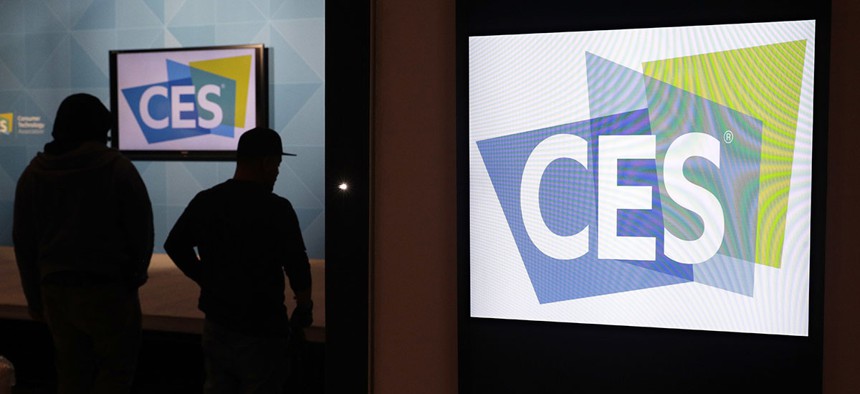Everything You Need to Know About CES 2017 in Under 2 Minutes

Workers prepare a booth during setup for CES International, Tuesday, Jan. 3, 2017, in Las Vegas. John Locher/AP
The first reveals at CES can set the tone for technology released throughout the rest of the year.
Let’s face it: A lot of stuff will come out of the Consumer Electronics Show this week, and most of it won’t leave the convention hall, let alone make it to market. But there is value in paying attention to the year’s first gadget reveals: The first reveals at CES can set the tone for technology released throughout the rest of the year.
For ongoing coverage, keep an eye on—nay, bookmark!—our real-time CES page. You can also follow Mike Murphy and Dave Gershgorn on Twitter. In the meantime, here’s what Quartz is looking for this week:
Cars
As cars become more like computers, and start to drive themselves, traditional automakers like Ford, Honda and GM have started using CES as a soapbox for trotting out their latest innovations. New models and concept cars were announced by major automakers last year, while newer industry players like Faraday Future offered a glimpse at their vision for the future of driving. Expect 2017 to be no different: We’re anticipating lots of zany, impractical and futuristic models on the show floor.
Voice
After the unexpected success of the Amazon Echo, tech companies are rushing to make “conversational computing” the Next Big Thing. Expect a wide variety of smart speakers with any combination of screens, wheels, eyes and cameras. The real measure of these devices, however, will be whether they can compete with the vast assortment of skills and smart-home features in the Echo and Google’s Home.
Augmented reality/virtual reality
It’s easy to lump AR and VR together because both technologies are still so nascent, and your grandmother understands neither. But virtual reality had its first shot at the consumer market in 2016, while true augmented reality isn’t anywhere close to having its own standalone face computer. Microsoft’s HoloLens remains the heir apparent to mainstream augmented reality, though startups are also pitching headsets geared at niche industries like construction and auto manufacturing.
On the VR front, don’t expect any new headsets from Oculus or HTC this year. Oculus won’t have as large a CES presence as it did in 2016, and HTC has already confirmed that its 2016 Vive isn’t slated for an update in 2017. While there will surely be newer headsets at CES, VR’s shaky launches to date don’t inspire confidence for new entrants, especially now that Microsoft has hardware partnerships for new headsets—slated for release later this year—with HP, Dell, Lenovo, Asus and Acer.
Robots/drones
This year’s CES will play host to a veritable army of machines that roll and fly on their own. Whether any of them are actually useful—i.e. can do anything besides take a photo, play some music and generally annoy humans—is the question everyone will be trying to answer. Either way, we’re likely to see robots and drones safer to use around people this year.
Internet of Things
This is the year of integration for IoT devices: If they don’t work with the smart speaker du jour, you can count them out. (Harsh, we know.) Also top of mind after the massive botnet attacks in 2016: It would be nice to know hackers can’t use your smart lights to destabilize the internet.
The usual suspects (TVs, refrigerators, home goods)
CES has always been the place for manufacturers to show off their newest HD TVs, fridges, washing machines and dishwashers—this year will be no different. The latest fad in TV-manufacturing is high dynamic range, which means more detail in the light and dark parts of the image. Every CES usually features at least one common gimmick too—think 3-D TVs, touch-screen fridges, or microwaves with companion apps—and that’s likely to be true in 2017 as well. Maybe this is the year we start having conversations with our machines.
NEXT STORY: GSA Wants Disruptive Tech for Shared Services





